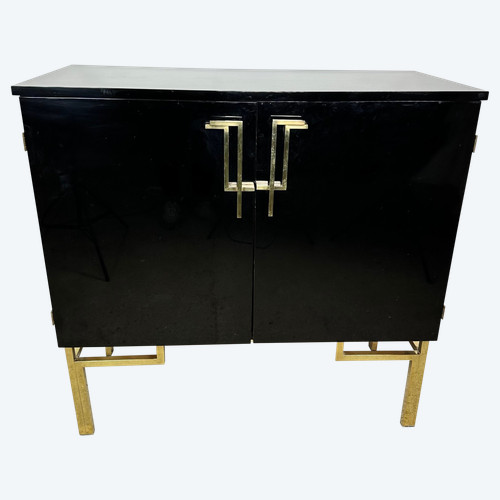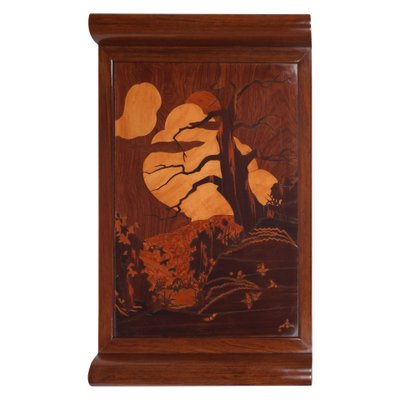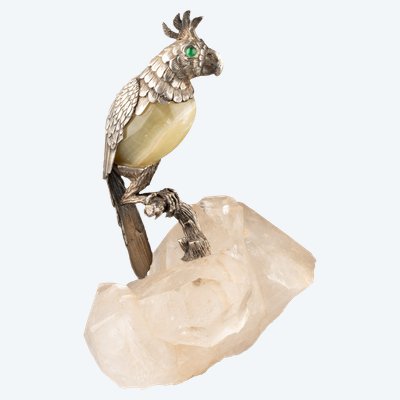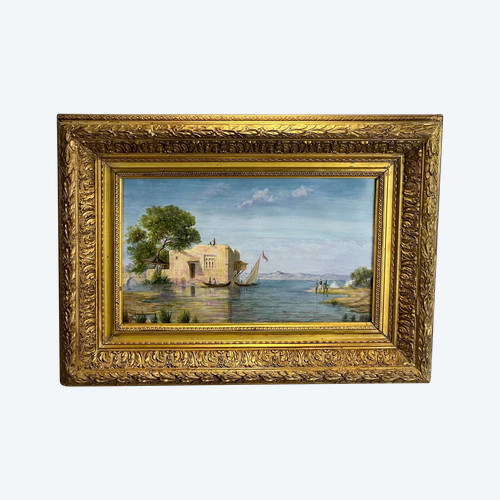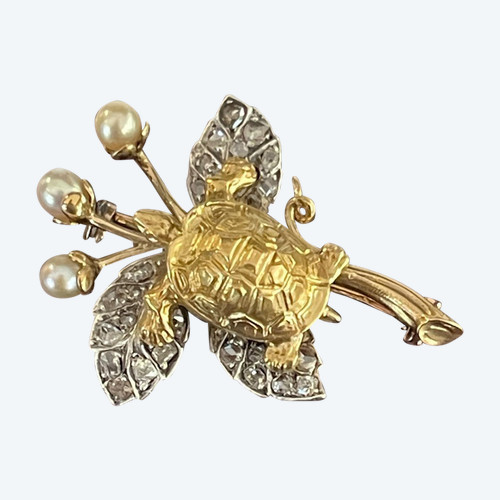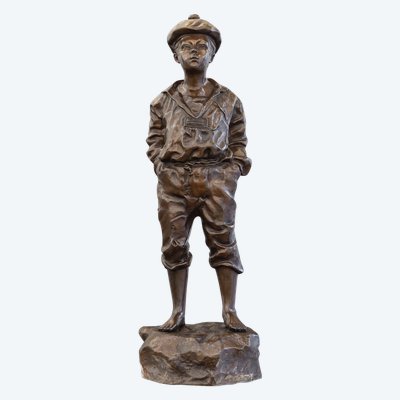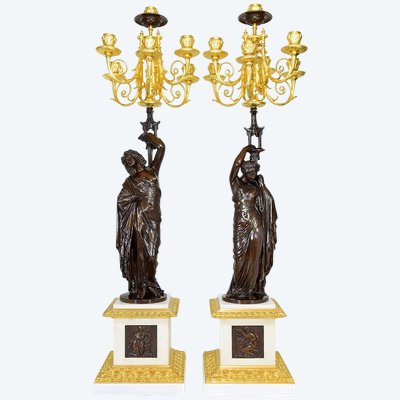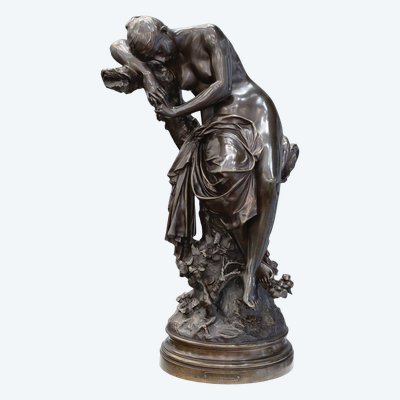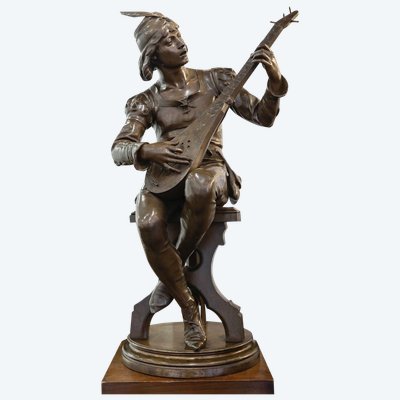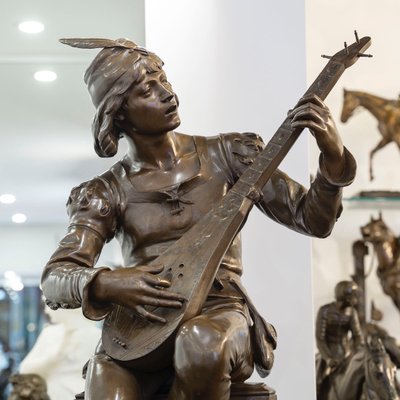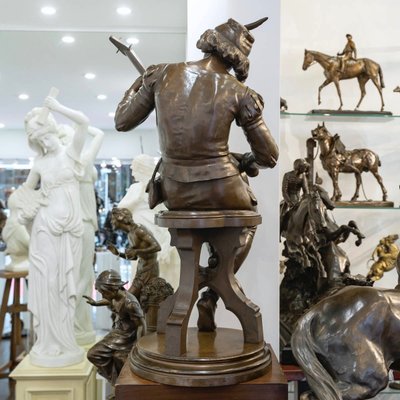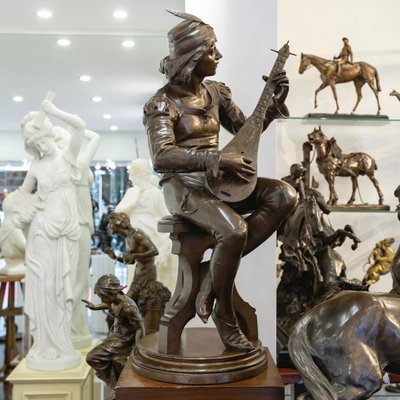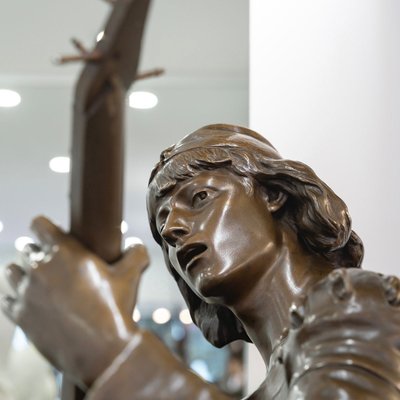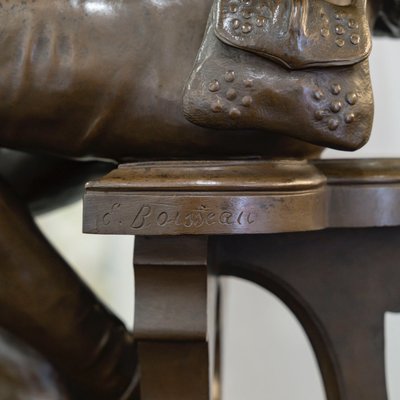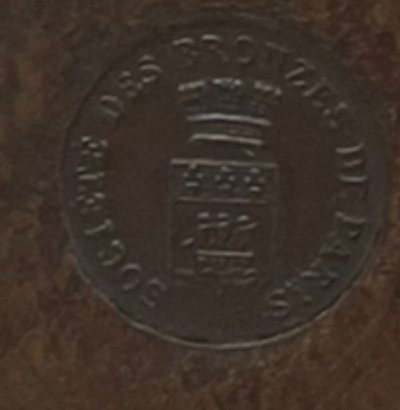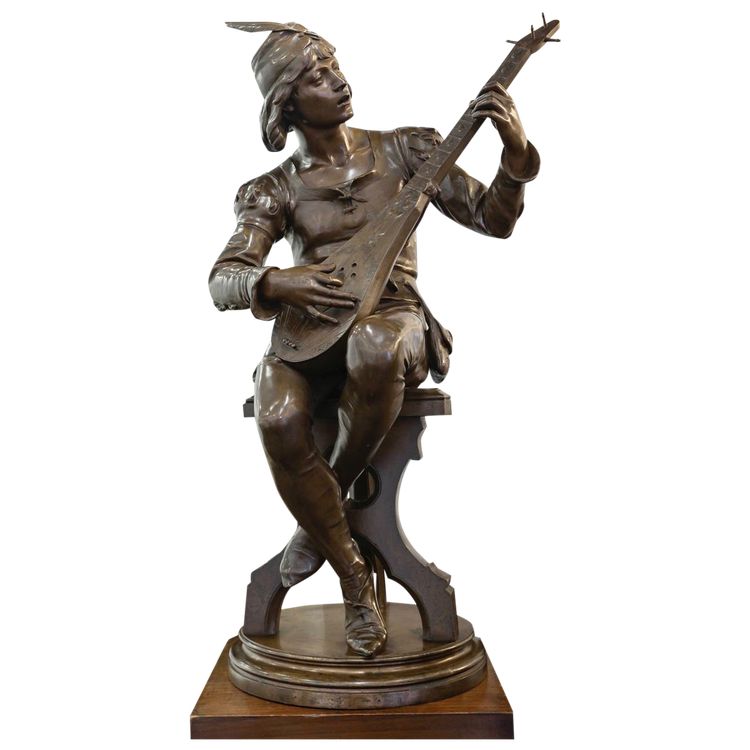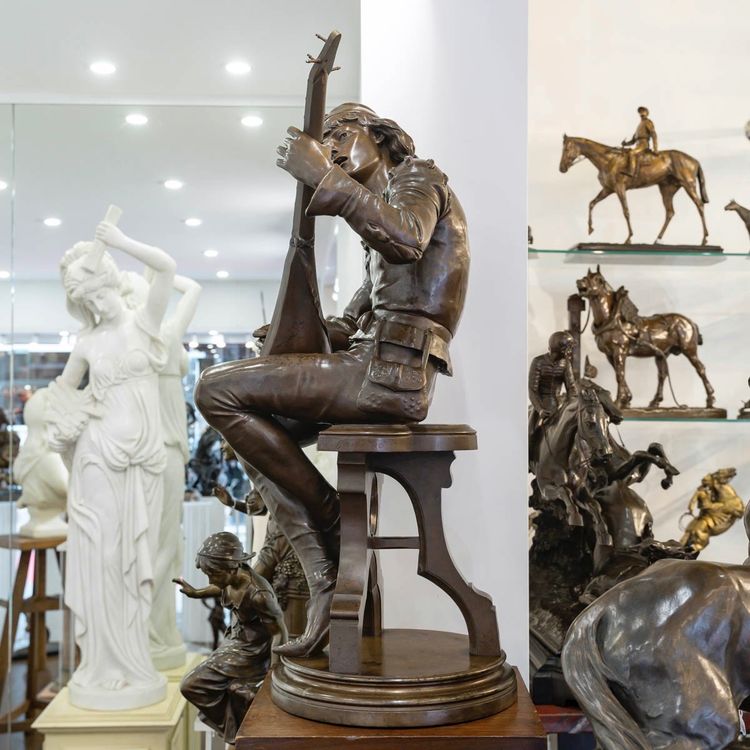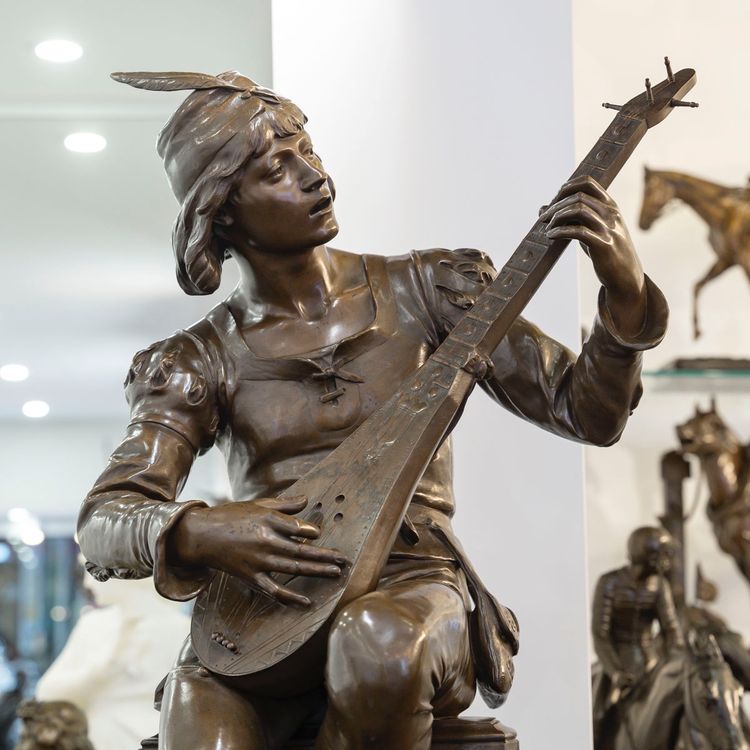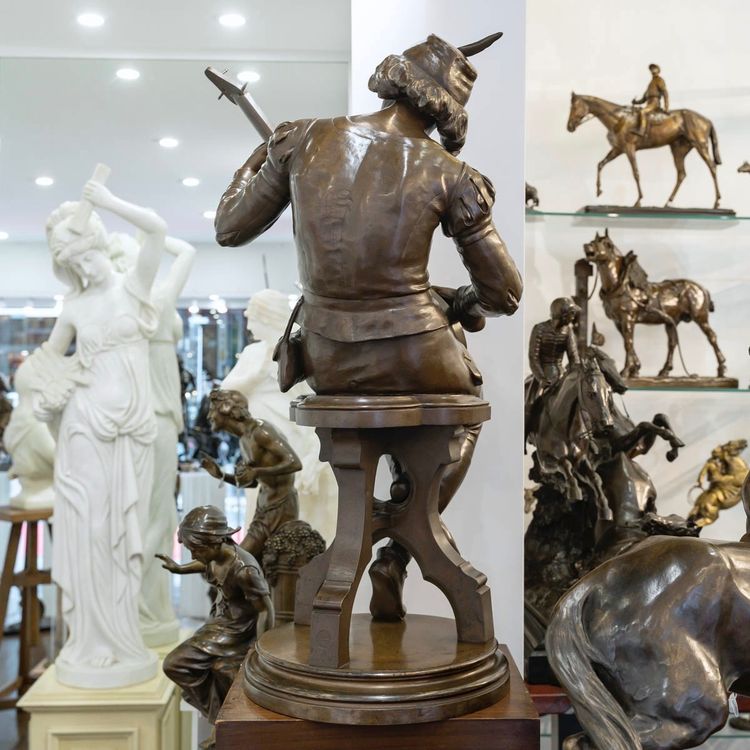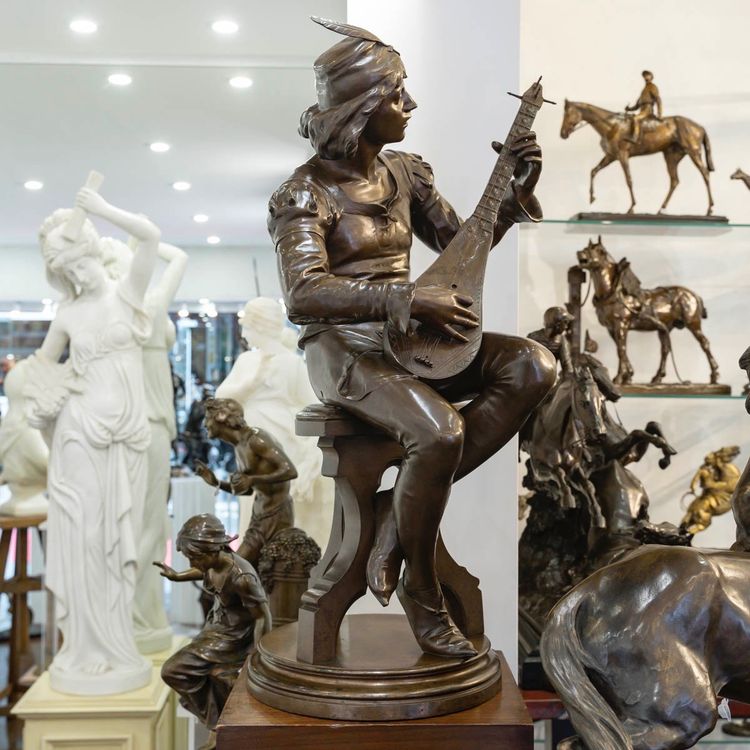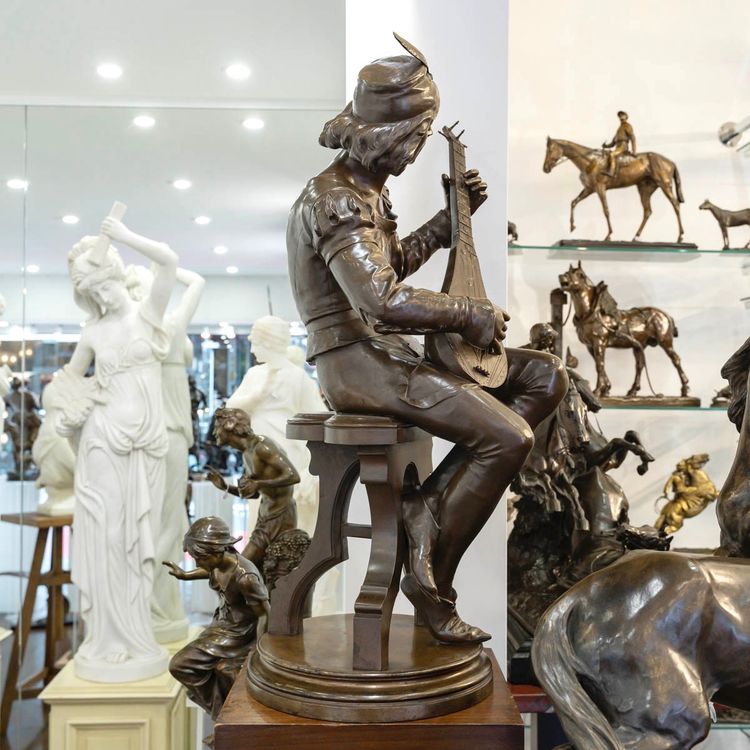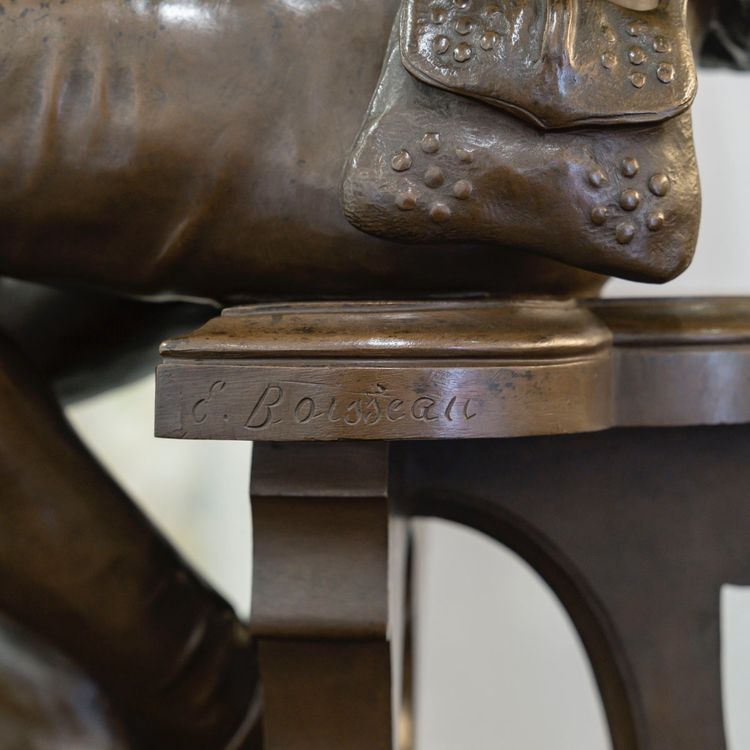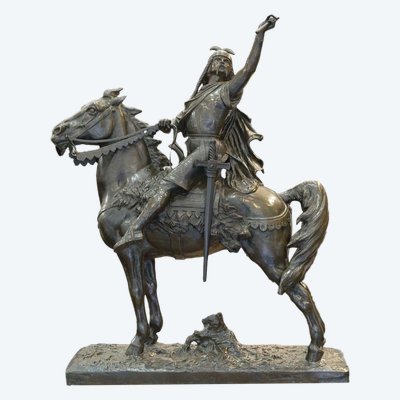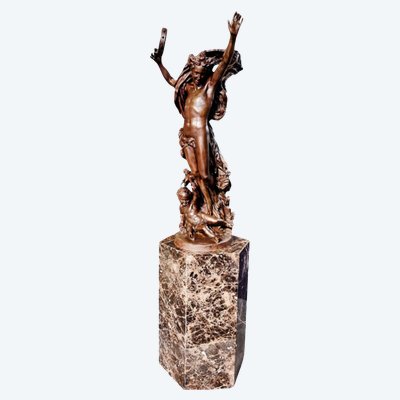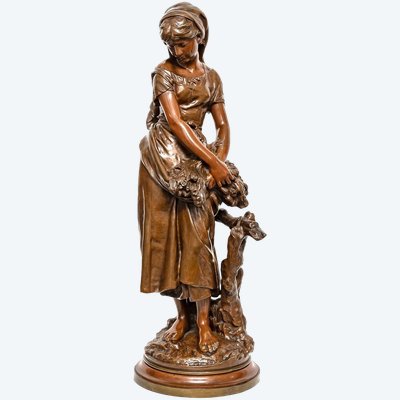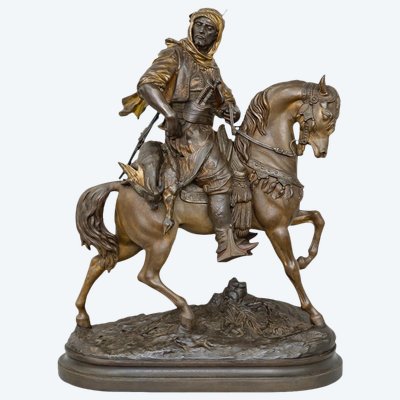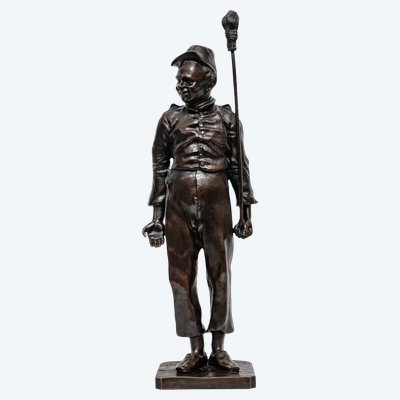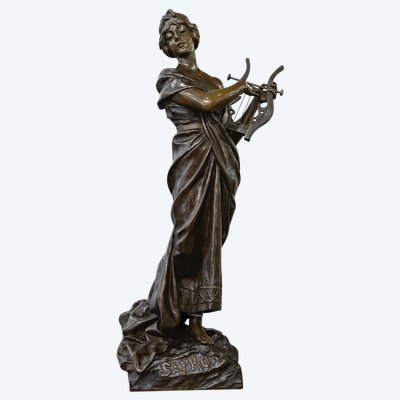This description has been translated and may not be completely accurate. Click here to see the original
Important bronze proof with brown patina , depicting
"Oysel The Troubadour", by the sculptor
Emile Boisseau (1842-1923) .
The troubadour is represented here in his traditional costume , with his lute , one of the most popular plucked string instruments of the time .
Signature of the sculptor
"E.Boisseau" on the top of the stool .
Circular stamp of the founder
"Société des bronzes de Paris" (Paris Bronze Company) , on the bottom of the stool .
Old edition sculpture , period second half of the 19th century .
Very good condition of conservation and patina .
Dimensions : 79 cm x 32 cm x 32 cm
The Troubadour movement began towards the end of the 11th century in Occitanie , among the high Occitan nobility .
It then spread to other social strata and spread to northern Italy and Spain .
The troubadours actively participated in the social , political and religious life of the society of the time .
Under the influence of the troubadours , movements of the same type arose all over Europe .
Accompanied by their instrument , most often the lute or the flute , they advocate courtly love , an essential theme .
Although they are often inspired by religious songs , they do not hesitate to get involved in social and political life by proclaiming values dear to their hearts .
Emile Boisseau (1842-1923)
Emile Boisseau is a french sculptor , born March 29 , 1842 in Varzy .
Seduced at a very young age by the attraction of the arts , the sight of churches and monuments , Emile Boisseau left his Nivernais cradle to go to Bourges , where he met an archaeologist sculptor , who employed him in the restoration of diocesan buildings including he's charged .
The carving of ornaments and figures sharpens his natural penchant for all forms of statuary .
Emile Boisseau , then entered
the School of Fine Arts in Paris , where he was taught by Auguste Dumont , then by Jean-Marie Bonnassieux .
In 1868 , Emile Boisseau made his debut at
the Paris Salon , he sent there the bronze statue of his compatriot General Dupin , and " Celuda mourning his child ", much noticed by critics and his colleagues .
He regularly appears at
the Paris Salon , then at
the Salon of French Artistes .
His works were rewarded in 1869 , 1880 , 1889 , and 1899 .
Among his shipments ,
"Captive Love" from 1891 and
"Twilight", a marble group from 1883 .
In 1882 , he sculpted
a statue of " Beaumarchais " for the facade of the Paris City Hall .
A marble version of his
"Defense of the Home" of 1884 was acquired by the City of Paris , which erected it in the Square du Champ-de-Mars .
Secretary of the sculpture jury , Fine Arts section at the 1900 Universal Exhibition , president of the Sculpture jury at the 1904 Salon , he has served since 1892 as treasurer of the Society of French Artists .
Emile Boisseau, received
the Legion of Honor in 1886 , and was
elevated to the rank of officer in 1900.
Emile Boisseau died on February 17 , 1923 , in his Paris Hotel .
Ref: 4LIP6KOZWS
 Solid Mahogany And Inlaid Art Deco Tray
390 € EUR
Solid Mahogany And Inlaid Art Deco Tray
390 € EUR
 Gold, Silver and Diamond "Turtle" Brooch
1.900 € EUR
Gold, Silver and Diamond "Turtle" Brooch
1.900 € EUR

